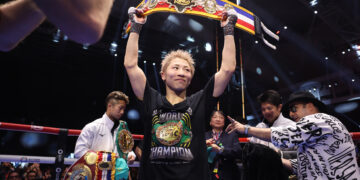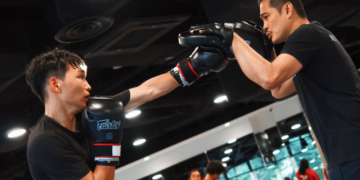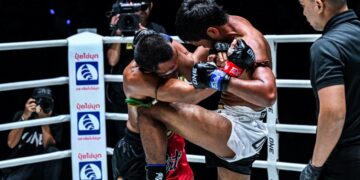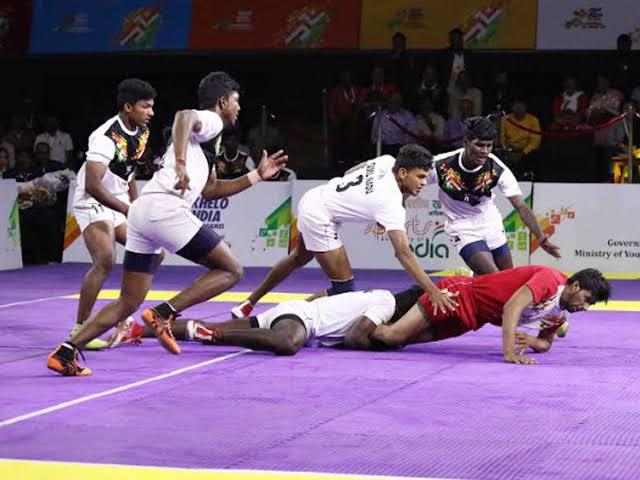
In Muay Thai, different fighters develop distinct styles based on their strengths and strategies. Muay Khao refers to the knee-fighting style, one of the most dominant approaches in the sport. A Muay Khao fighter uses forward pressure, strong clinch control, and relentless knee strikes to wear down opponents. Unlike flashy or technical styles that rely on timing and finesse, Muay Khao emphasizes endurance, toughness, and overwhelming volume.
The name itself highlights the importance of knees. “Khao” means knee in Thai, and fighters who adopt this style are known for their ability to control clinch exchanges and land knees to the body, ribs, and even the head. While the style demands physical strength, its true power lies in discipline, persistence, and the mental resilience required to constantly march forward.
Famous Muay Khao Fighters And Their Influence
The history of Muay Thai is filled with fighters who embodied the Muay Khao spirit. One of the most legendary was Dieselnoi Chor Thanasukarn, known as the “Sky Piercing Knee.” Standing tall with long legs and incredible stamina, Dieselnoi used his knees to dominate every opponent during his era. His success showed how powerful this style could be when perfected.
Other notable fighters include Petchboonchu FA Group, often called the “Knee Machine,” who became famous for his relentless clinch work and ability to grind down even the most skilled technicians. Fighters like Sagetdao Petpayathai and Singdam Kiatmoo9 also showcased how effective the style is, particularly against opponents who preferred to strike from distance.
Their influence extends beyond Thailand. Today, gyms around the world teach Muay Khao techniques, and many modern fighters use elements of the style to gain an edge in competition.
Techniques That Define A Muay Khao
The Muay Khao style is built on a set of techniques that maximize pressure and control. Some of which include:
1) Clinch Control
A strong clinch is the heart of the style. Fighters focus on arm positioning, balance, and head control to dominate inside exchanges.
2) Knee Strikes
Knees are delivered in rapid succession to the ribs, stomach, or thighs, wearing down an opponent’s stamina. Fighters also use diagonal knees to cut angles and break guards.
3) Sweeps And Off-Balancing
To make knees more effective, Muay Khao fighters use trips and sweeps from the clinch. These moves disrupt an opponent’s rhythm and open opportunities for further strikes.
4) Forward Pressure
Constantly advancing forces opponents onto the back foot. This pressure makes it difficult for them to set up their own attacks.
The combination of these techniques creates a style that is less about single strikes and more about breaking down an opponent over time.
Combinations For Muay Khao
While knees are the signature weapon, Muay Khao fighters use combinations to stay unpredictable.
- Double Knee Combination: Land a knee, adjust grip, and follow with another from the opposite side to keep the attack flowing.
- Knee To Elbow: After a knee to the body, slip in a short elbow when the opponent drops their guard.
- Knee To Sweep To Knee: Use a knee, off-balance the opponent with a trip, then land another knee as they recover.
- Knee Chain: Alternate high and low knees, switching rhythm to overwhelm defenses.
These combinations ensure that a Muay Khao fighter does not become predictable, forcing the opponent to constantly guess what is coming next.
Drills And Training Tips For Muay Khao
Training in any style requires both physical conditioning and technical drilling. In particular, the Muay Khao should focus on the following key aspects:
1) Clinch Drills
Spend time controlling a training partner in the clinch. Practice changing grips, turning opponents, and maintaining balance.
2) Knee Heavy Bag Drills
Drive knees repeatedly into a heavy bag to build endurance and accuracy. Focus on mixing angles and targeting different heights.
3) Partner Resistance Drills
Have a partner resist while you attempt to land knees in the clinch. This simulates real fight conditions.
4) Cardio And Conditioning
Running, skipping, and bodyweight exercises help build the stamina required to keep pressure throughout a fight.
5) Shadowboxing With Knees
Practice flowing between knees, elbows, and sweeps without equipment to refine rhythm and footwork.
The most important training tip for Muay Khao is consistency. Building the cardio, timing, and strength for this style comes from repeated drilling over long periods. The next time you’re thinking of skipping a rep or set, think about how you’re one step closer to perfecting that clinch or knee!
FAQs Of The Muay Khao Style
Q: What Does Muay Khao Mean?
A: Muay Khao translates to “knee fighter” in Thai. It describes fighters who specialize in clinch control and knee strikes.
Q: Is Muay Khao Suitable For Beginners?
A: Yes. While it demands good cardio, beginners can start by practicing basic knee techniques and clinch drills. Over time, they can build the endurance required for the style.
Q: Why Is The Muay Khao Style So Effective?
A: The style is effective because it overwhelms opponents with constant pressure. Knees are powerful strikes that are hard to defend in the clinch, and over time, they wear down even the toughest fighters.
Q: How Can I Improve My Muay Khao Skills?
A: Focus on clinch control, drill knees consistently, and work on cardio. Studying legendary fighters like Dieselnoi can also provide insight into how to apply the style effectively.
Conclusion
The Muay Khao style is one of the most dominant approaches in Muay Thai. It represents the relentless spirit of the sport, where discipline, endurance, and determination triumph over flash and speed. Defined by its powerful knees and crushing clinch control, the Muay Khao style is favored by some of the most legendary fighters in the history of the sport.
For practitioners, studying this style offers not only new techniques but also a lesson in resilience. By embracing the Muay Khao way, fighters learn that victory is often not about a single moment of brilliance, but about the ability to keep pressing forward until the opponent can no longer resist.
You may also like:
The Complete Gear Guide For Muay Thai Beginners: What You Really Need (And What You Don’t)
Starting Muay Thai is exciting, but walking into your first class can feel intimidating if you don’t know what to bring. Gloves, wraps, shorts, shin guards… do you really need them all on day one?…
Muay Thai is celebrated worldwide as the art of eight limbs, but within its long history are traditional regional styles that shaped the sport as we know it today. Among these is Muay Thasao, a…
Muay Thai is often called the art of eight limbs, using fists, elbows, knees, and kicks in fluid combinations. While power and technique get a lot of attention, rhythm is what ties everything together. Fighters…
In martial arts, improvement does not come only from sparring or drilling techniques. Another powerful tool for growth is watching fight replays. Whether its a professional bout streamed worldwide or a recorded sparring session in…
Sparring is one of the most important parts of martial arts training. Whether you practice boxing, Muay Thai, Brazilian Jiu-Jitsu, or MMA, sparring helps you test your techniques in a realistic setting. It sharpens timing,…
Muay Thai is often called the art of eight limbs because of its use of punches, kicks, elbows, and knees. But one of the most defining features of the sport is the clinch. For many…
Children’s martial arts programs are becoming increasingly popular, with many parents seeking activities that do more than just keep their kids active. Martial arts training teaches important values like discipline, confidence, and respect, but one…
Singapore is known worldwide for its fast-paced life. Long work hours, competitive education, and the constant drive for success have given rise to what many call “hustle culture.” While this culture often pushes people to…
Mixed Martial Arts, or MMA, is often seen as the ultimate test of a fighter’s skill. It combines striking, grappling, and strategy into one dynamic sport. But behind every highlight reel knockout or submission win…
Brazilian Jiu-Jitsu, often called BJJ, is filled with techniques that allow a smaller or less powerful practitioner to reverse positions and gain control. Among the most iconic is the flower sweep. For students of all…
Boxing has always been a sport defined by moments. While strategy, endurance, and skill matter, it is often the knockouts that remain etched in history. A perfectly timed punch can shift the course of a…
When you first start training Brazilian Jiu-Jitsu, instructors often tell you to “use your weight” when passing guard or holding top positions. But what does that actually mean? Weight distribution is how you place and…




































